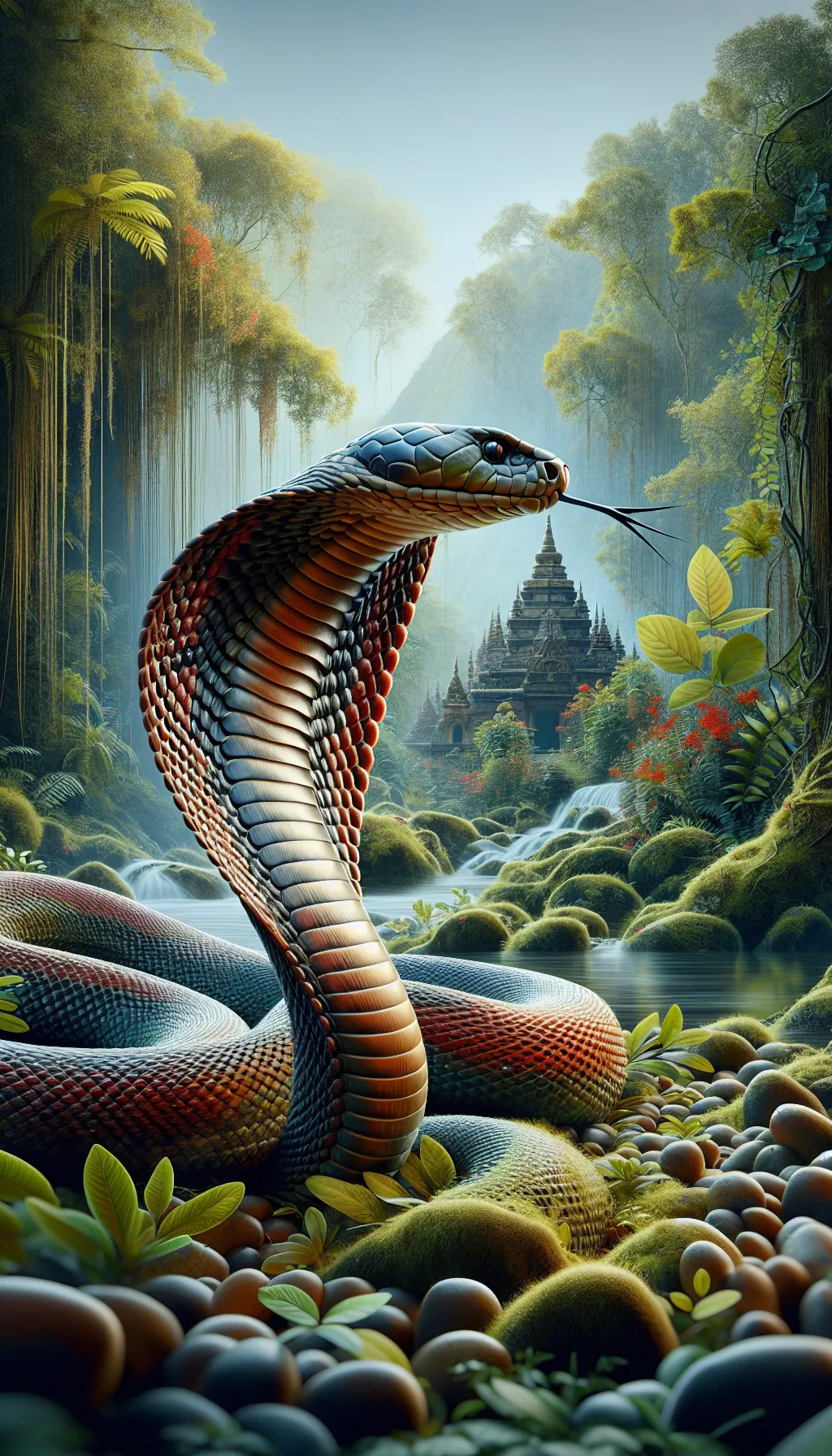The Indian Cobra
The Indian Cobra, also known as the spectacled cobra, is a highly venomous snake native to the Indian subcontinent. It is easily recognizable by its hood, which it spreads when threatened, and its distinct markings, resembling spectacles or glasses. This snake can grow up to 6-7 feet in length and is known for its hissing sound and deadly bite.

| Indian Cobra | |
|---|---|
| Size | Up to 6 feet (1.8 meters) |
| Weight | Up to 6 pounds (2.7 kilograms) |
| Speed | 6-8 mph (10-12 km/h) |
| Key Strength | Venomous bite |
| Biggest Weakness | Vulnerability to bigger predators |
| Scientific Name | Naja naja |
| Family | Elapidae |
| Habitat | Grasslands, forests, farmlands |
| Geography | Indian subcontinent |
| Diet | Rodents, birds, small animals |
| Lifespan | 12 years - 20 years |

The Indian Cobra
The Indian Cobra, also known as the spectacled cobra, is a highly venomous snake native to the Indian subcontinent. It is easily recognizable by its hood, which it spreads when threatened, and its distinct markings, resembling spectacles or glasses. This snake can grow up to 6-7 feet in length and is known for its hissing sound and deadly bite.
Fun Fact: The Indian Cobra is not a generally aggressive snake and will usually only strike when it feels threatened.
| Indian Cobra | |
|---|---|
| Size | Up to 6 feet (1.8 meters) |
| Weight | Up to 6 pounds (2.7 kilograms) |
| Speed | 6-8 mph (10-12 km/h) |
| Key Strength | Venomous bite |
| Biggest Weakness | Vulnerability to bigger predators |
| Scientific Name | Naja naja |
| Family | Elapidae |
| Habitat | Grasslands, forests, farmlands |
| Geography | Indian subcontinent |
| Diet | Rodents, birds, small animals |
| Lifespan | 12 years - 20 years |
Indian Cobra Matchups
We use AI to simulate matchups between the Indian Cobra and other animals. Our simulation considers size, strength, and natural predatory behaviors to determine the most likely outcome.
Indian Cobra: Diet, Predators, Aggression, and Defensive Behaviors
What do Indian Cobras eat?
Indian Cobras primarily feed on small mammals like rodents, birds, frogs, and lizards. They are also known to consume other snakes, including smaller cobras. They are skilled hunters and use venom to subdue their prey before swallowing them whole.
Do Indian Cobras have any predators?
While Indian Cobras do not have many natural predators due to their venomous nature, they may still fall prey to larger predators such as mongooses, birds of prey, and some snake-eating species like the king cobra. However, their venomous bite acts as a strong deterrent against most predators.
Are Indian Cobras aggressive?
Indian Cobras are generally shy and elusive snakes but can become aggressive when threatened or cornered. They will adopt a defensive posture, raise their hoods, and hiss loudly to warn off potential threats. If provoked further, they may strike and inject venom through their fangs.
Do Indian Cobras fight?
Indian Cobras are solitary animals and do not engage in physical fights with other snakes for territory or mates. However, they may engage in combat rituals during the breeding season, where males wrestle with each other to establish dominance and the right to mate with females.
How do Indian Cobras defend themselves?
Indian Cobras have several defense mechanisms to protect themselves from harm. Their most prominent defense is their hood, which they can flare up when threatened to appear larger and more intimidating. They also use their venomous bite as a last resort to deter predators or threats.
What is the biggest weakness of Indian Cobras in a fight?
Despite their potent venom and intimidating defensive strategies, the Indian Cobra's biggest weakness in a fight is their vulnerability to larger predators such as the king cobra. The king cobra is not only immune to the Indian Cobra's venom but also possesses superior size and strength, making it a formidable adversary in a confrontation.
Fun Fact: The venom of the Indian Cobra is neurotoxic, affecting the nervous system, and can be deadly if not treated promptly.
Fun Fact: Indian Cobras are revered in Hindu mythology and considered sacred by many people as they are associated with Lord Shiva, one of the principal deities of Hinduism.










